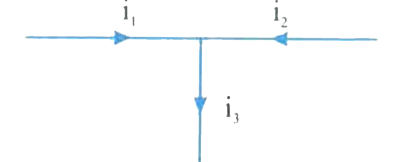The function x=Asin2(ω)t+Bcos2(ω)t+Csin(ω)tcos(ω)t represent (SHM) for which of the option(s).
A
For all value of A,BandC (except C = 0)
B
A=−B,C=2B,amplitude=∣∣B√2∣∣
C
A=B,C=0
D
A=B,C=2B,amplitude=|B|
Video Solution
Text Solution
The correct Answer is:B, D
For A=−B and C=2B
X=Bcos2ωt+Bsin2ωt=√2Bsin[2ωt+π4]
This is equation of SHM of amplitude √2B.
If A=B and C=B, then X=B+Bsin2ωt
This is also equation of SHM about the point X=B. Function oscillates between X=0 and X=2B with amplitude B.
|
Updated on:21/07/2023
Topper's Solved these Questions
- BOOK - CENGAGE PHYSICSCHAPTER - ARCHIVES 2 VOLUME 6EXERCISE - Comprehension12videos
ARCHIVES 2 VOLUME 6
- BOOK - CENGAGE PHYSICSCHAPTER - ARCHIVES 2 VOLUME 6EXERCISE - Integer4videos
ARCHIVES 2 VOLUME 6
- BOOK - CENGAGE PHYSICSCHAPTER - ARCHIVES 2 VOLUME 6EXERCISE - Single Correct51videos
ARCHIVES 2 VOLUME 6
- BOOK - CENGAGE PHYSICSCHAPTER - ARCHIVES 1 VOLUME 6EXERCISE - Integer4videos
ARCHIVES 1 VOLUME 6
- BOOK - CENGAGE PHYSICSCHAPTER - BASIC MATHEMATICSEXERCISE - Exercise 2.620videos
BASIC MATHEMATICS
Similar Questions
Knowledge Check
- Question 1 - Select One
The function sin2(ωt) represents
Aa periodic, but not simple harmonic motion with period 2π/ωBa periodic, but not simple harmonic motion with period π/ωCa simple harmonic motion with a period 2π/ωDa simple harmonic motion with a period π/ω - Question 2 - Select One
The function sin2(ωt) represents
Aa periodic, but not simple harmonic, motion with a period 2π/ωBa periodic, but not simple harmonic with a period π/ωCa simple harmonic motion with a period 2π/ωDa simple harmonic motion with a period π/ω - Question 3 - Select One
The function sin2(ωt) represents:
Aa simple harmonic motion with a period 2π/ω.Ba simple harmonic motion with a period π/ω.Ca periodic , but not simple harmonic motion with a period 2π/ω.Da periodic , but not simple harmonic motion with a period π/ω.
The r.m.s. value of I=I1sinωt+I2cosωt is
View SolutionFind time period of the function, y=sinωt+sin2ωt+sin3ωt
View SolutionIf y=αcosωt+bsinωt, show that it represents SHM. Determine its amplitude.
View SolutionIdentify which of the following function represent simple harmonic motion.
(i) Y=AeIωt (ii) Y=ae−ωt
(iii) y=asin2ωt (iv) y=asinωt+bcosωt
(v) y=sinωt+bcos2ωtView SolutionEquations y=2Acos2ωtandy=A(sinωt+√3cosωt) represent the motion of two particles.
View Solution


